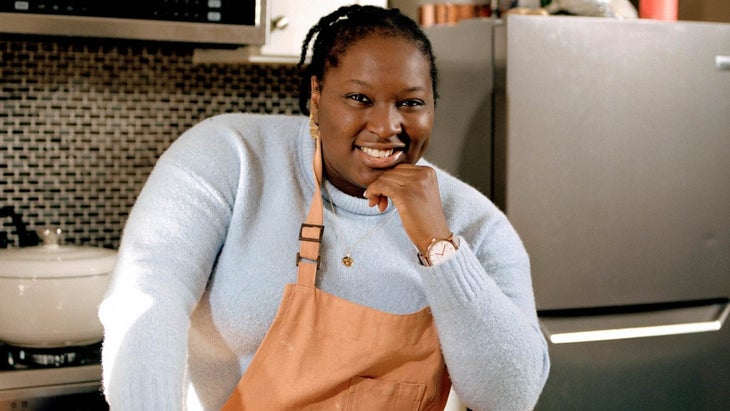Heading out the door? Read this article on the new Outside+ app available now on iOS devices for members! Download the app.
There’s a time in any home cook’s life when we realize something must change. For me that came when my trash bag weighed in at 21 pounds—after two days. I consider myself a person who tries to do right by the planet. But after noticing just how much garbage my two-person household was generating, I knew I had work to do. The plan was to go zero-waste—a lifestyle that aims to keep trash out of landfills and reduce as much food-related refuse as possible—and to get there in two weeks.
For help, I reached out to a couple of experts: Lauren Singer, a leading blogger in the zero-waste movement, and Anne-Marie Bonneau, author of the cookbook The Zero-Waste Chef.

“The average American family of four throws away about $1,500 worth of food every year,” Bonneau told me. Besides saving money, Bonneau’s food tasted better after going zero waste. That’s because, to minimize the amount of packaging that gets thrown away, she gravitates toward produce and fresh veggies while shopping.
That sounds great, of course. But Singer soon brought me back to reality. According to her, two weeks was simply not enough time to go waste-free.
“It’s something you do little by little,” she said. Well, bummer.
Still, I could make a dent in my trash production. I took Singer’s advice and committed to a few meaningful changes. The U.S. is the world leader when it comes to food waste, dumping approximately 214 pounds per person into landfills each year. I looked at my cabinets and fridge at the beginning of my trial, both of which were pretty full, and decided to cancel all grocery store trips and stop ordering takeout. (I had to delete my delivery apps so I wouldn’t be tempted to call in my favorite hand-pulled noodle dish after two days.) Also, I use way too many paper towels, so I bought cloth napkins and dish towels.
Next, I got creative with leftover ingredients. I gained an appreciation for sweet potato skins, which are rich in fiber and can be used to hold delicious concoctions like mashed kale and goat cheese. Instead of throwing out the goopy interior of squashes, I ate enough roasted seeds for an entire family. And I used takeout sauces, like Indonesian kecap manis, to create stir-fries filled with vegetables that might otherwise have gone bad. (My bank account thanked me for this.) Paper towel rolls remained in my linen closet, save for a few bathroom wipe-downs—I never said I was perfect.
Going zero waste, even just where food is concerned, takes a fundamental behavioral shift. But baby steps make a difference. My last bag of trash took almost two weeks to fill rather than the usual two days, and it weighed only 12 pounds.
Singer says that achieving a truly zero-waste lifestyle can take months or even years. While I’ve made major strides with food waste, I may not ever get there. But those cloth napkins? They’re here to stay.
From Outside